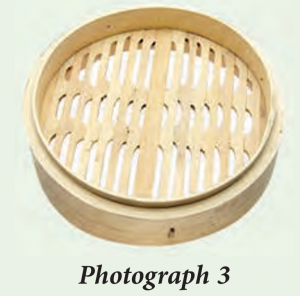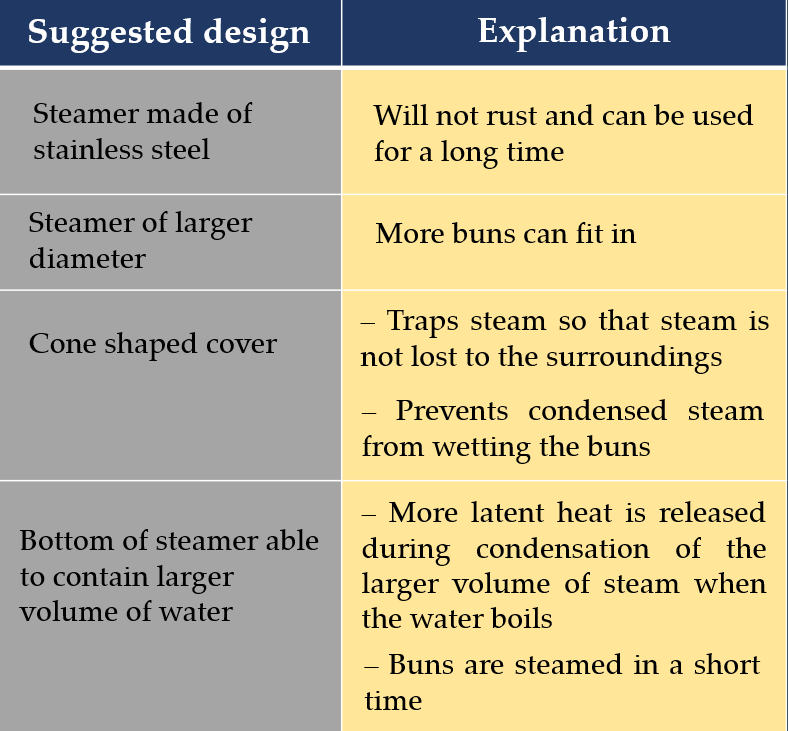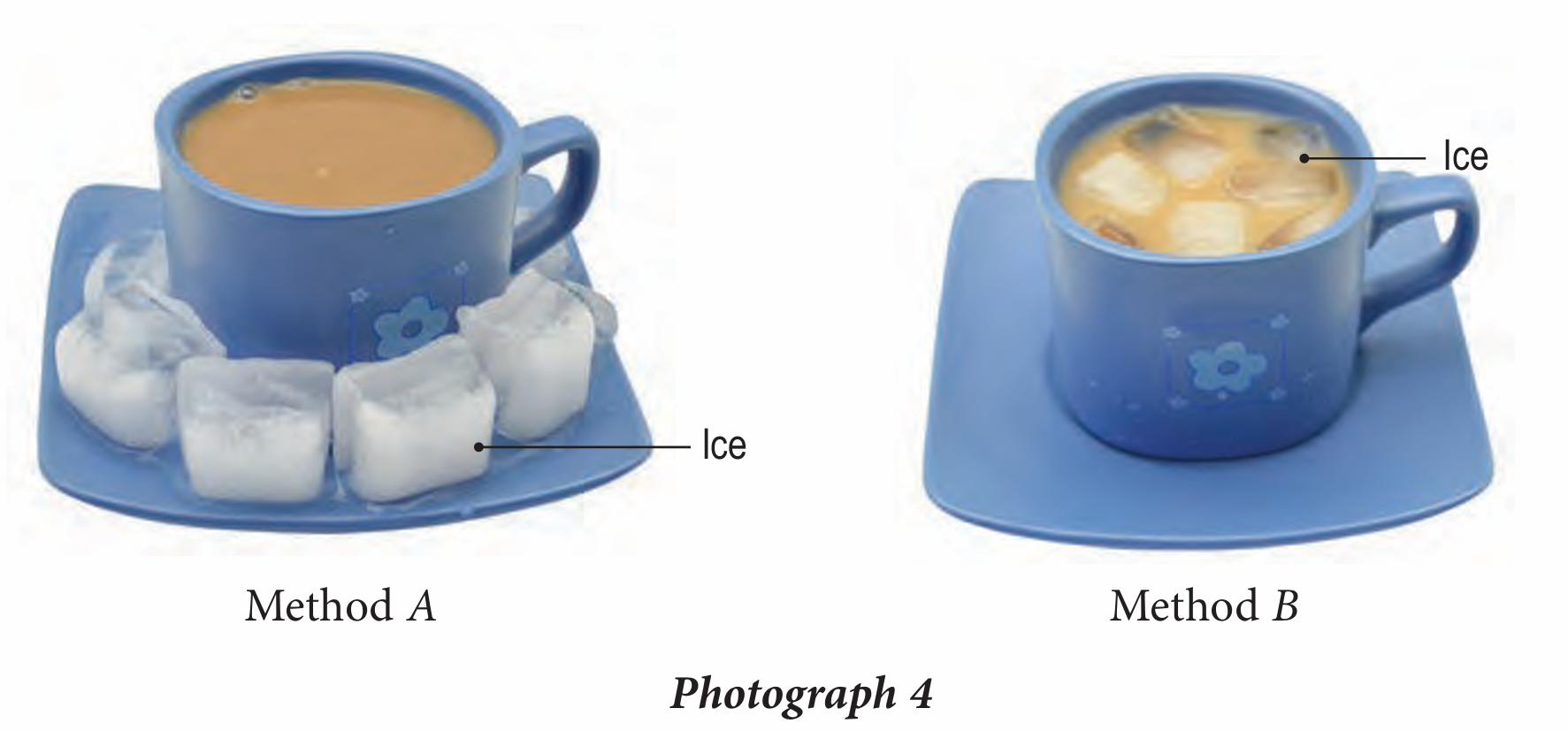Question 13:

Photograph 3 shows a bamboo steamer. Amin receives an order from a supermarket to supply 400 steamed buns per day. Suggest and explain the design of the steamer needed. The steamer should be durable, and able to prepare a large quantity of steamed buns in a short time.
Answer:


Photograph 3 shows a bamboo steamer. Amin receives an order from a supermarket to supply 400 steamed buns per day. Suggest and explain the design of the steamer needed. The steamer should be durable, and able to prepare a large quantity of steamed buns in a short time.
Answer:

Question 14:
Khairi orders a cup of coffee in a restaurant. He finds that the coffee is too hot. Photograph 4 shows two suggested ways to cool the coffee.

(a) Discuss the suitability of methods A and B to cool the coffee in the cup.
(b) State your choice. Give reasons for your choice.
Answer:
(a)
Suitability of method A
– Ice around the base of the cup absorbs latent heat from the cup and saucer. Temperature of cup and saucer drops. Heat flows from the hot coffee through the walls of the cup to the melting ice. In this way, the coffee is cooled.
– This process is slow because it involves flow of heat through the walls of the cup.
– Water from the melting ice is outside the cup and does not dilute the coffee.
Suitability of method B
– Ice in the coffee absorbs latent heat directly from the coffee. The coffee loses a large amount of heat and is cooled quickly. Quantity of ice needed is not as much compared to method A.
– Water from the melting ice will mix with the coffee and change its taste.
(b)
I choose method A.
– Method A can cool the milk coffee without changing its taste.
– Method B not only cools the milk coffee but also changes its taste.
Khairi orders a cup of coffee in a restaurant. He finds that the coffee is too hot. Photograph 4 shows two suggested ways to cool the coffee.

(a) Discuss the suitability of methods A and B to cool the coffee in the cup.
(b) State your choice. Give reasons for your choice.
Answer:
(a)
Suitability of method A
– Ice around the base of the cup absorbs latent heat from the cup and saucer. Temperature of cup and saucer drops. Heat flows from the hot coffee through the walls of the cup to the melting ice. In this way, the coffee is cooled.
– This process is slow because it involves flow of heat through the walls of the cup.
– Water from the melting ice is outside the cup and does not dilute the coffee.
Suitability of method B
– Ice in the coffee absorbs latent heat directly from the coffee. The coffee loses a large amount of heat and is cooled quickly. Quantity of ice needed is not as much compared to method A.
– Water from the melting ice will mix with the coffee and change its taste.
(b)
I choose method A.
– Method A can cool the milk coffee without changing its taste.
– Method B not only cools the milk coffee but also changes its taste.
